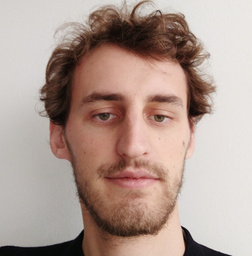created by Christoph Spiegel

IOL 2024 Wrapped
This year brought new faces to our lab, saw important research breakthroughs, and took us around the world to share our work.
Join us as we take a look back at the past year!
ZIB turned 40 this year! 
Since 1984, ZIB has been pushing boundaries in applied mathematics and high-performance computing, bringing together researchers from diverse fields.
It has been a home to our research lab since 2019 and we are looking forward to many more years!
Fresh faces and fond farewells!
Our research lab is constantly evolving with new members joining and others moving on to new opportunities.
We published our work in leading venues this year, including Mathematical Programming, Foundations of Computational Mathematics, SIAM Journal on Optimization, and several major conference proceedings.
Some highlights were …
Understanding forest canopy height is essential to tracking carbon storage and addressing climate change. Using deep learning and satellite data
we built an open global canopy height map!

Two fundamental algorithms in Riemannian optimization had incomplete analyses for 30+ years.
We finally proved tight bounds on where the iterates go and how fast they converge!
This work provides multiple algorithm variants that work well in practice for problems like computing Karcher means.

A probabilistic lookahead strong branching method, which relates dual gains to expected tree size in a stochastic branching model, won iol.INT co-lead Gioni Mexi the
Best Student Paper Award at CPAIOR 2024!
This enables a dynamic stopping criterion for strong branching, improving both runtime and memory consumption in SCIP.

The Koopman-von Neumann equation has long been a theoretical bridge between classical and quantum mechanics.
We established a complete functional framework proving existence and uniqueness of solutions on bounded domains!
This work was published in Journal of Physics A and opens new avenues for numerical simulation, quantum device implementation, and data-driven approximation of quantum transfer operators.
We used neural networks to color the plane …
… obtaining two novel constructions that avoid monochromatic pairs of points at specific instances, the first improvement on this off-diagonal version of the Hadwiger-Nelson problem in 30 years. We even made international news!
We also took our research on tour …
Of course, this work needed funding …
… and with the renewal proposals of both the Research Campus MODAL as well as the Cluster of Excellence MATH+ being due, there was a lot of attention on funding this year. Apart from these major funding initiatives we also applied for and obtained funding for several other grants.

Sebastian Pokutta was also elected as the chair of MATH+
jointly with Claudia Schillings from FU and Andrea Walther from HU Berlin.
Research is better together
Our lab was a hub of activity throughout the year. We hosted researchers from around the world, shared ideas in our research seminar, and built partnerships with both academic institutions and industry. These connections have sparked new research directions and strengthened our work.

We thank everyone for making 2024 unforgettable. We can’t wait to see what breakthroughs and adventures 2025 brings!
We wish everyone a happy new year!

































